Granite countertops are popular for kitchens and bathrooms due to their unmatched durability, timeless elegance, and natural beauty. However, like all stone surfaces, granite can be susceptible to staining if not properly sealed or maintained. Spills from substances such as coffee, wine, oil, and acidic liquids can penetrate the porous surface, leaving unsightly marks over time.
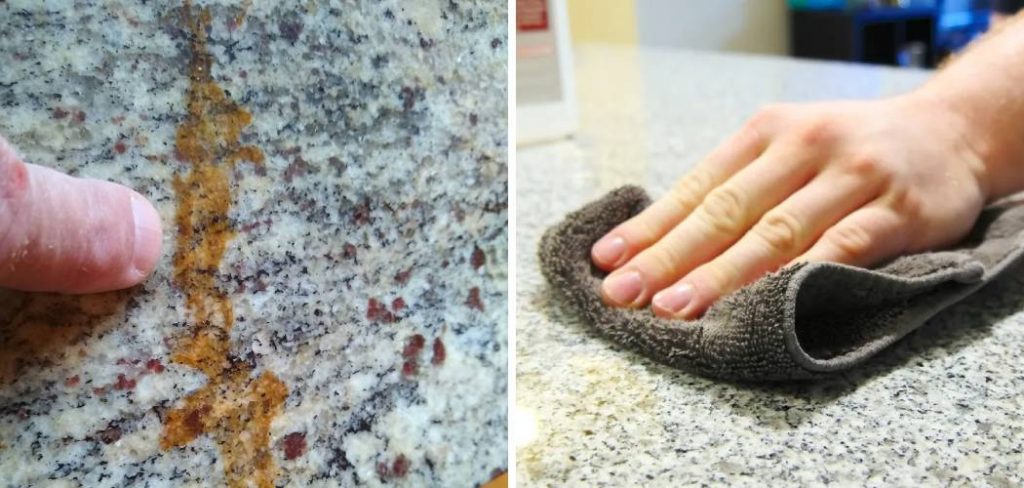
Understanding how to remove stains granite countertops is crucial for maintaining their pristine appearance and longevity. This article aims to provide practical and effective methods for tackling various types of stains, ensuring your granite countertops continue enhancing your space’s charm while remaining flawless. By following the tips and techniques outlined here, you can address common stains without compromising the integrity or aesthetic of your granite surfaces.
Understanding Granite and Staining
Why Granite Stains
Granite is a natural stone celebrated for its durability and beauty, but also porous. Without proper sealing, the pores in granite allow liquids and substances to seep into its surface. This absorption leads to staining, as substances settle within the material and become difficult to remove over time. Proper sealing and regular maintenance are critical to preventing stains and preserving the longevity of granite countertops.
Types of Granite Stains
Granite can be susceptible to several types of stains, each caused by different substances:
- Organic Stains
Stains from organic substances such as food, coffee, tea, or wine are common. These stains often appear brown or pinkish and can be challenging to remove if left untreated.
- Oil-Based Stains
Grease, cooking oils, and cosmetic products can leave oil-based stains. These create darker patches on granite surfaces, typically requiring special cleaners to extract the oil.
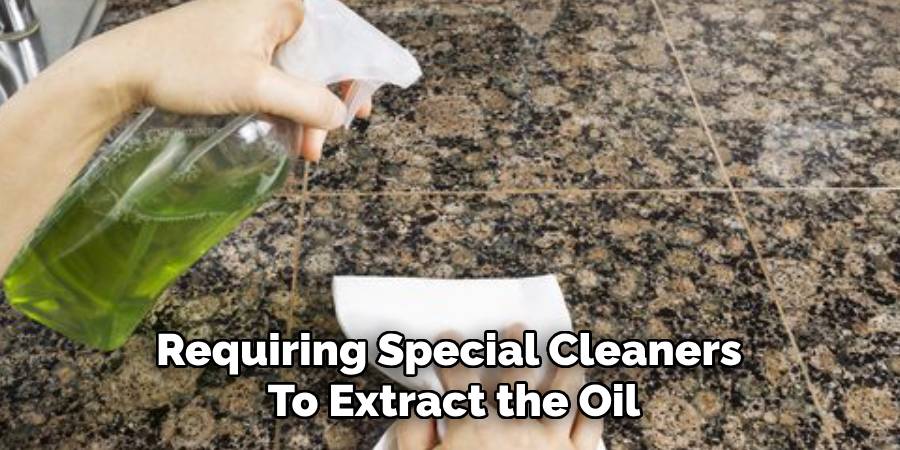
- Water Stains
Hard water rings or mineral deposits from water can leave unsightly stains. They usually occur when water is left to sit on the granite for extended periods.
- Rust Stains
Rust stains can appear if metal objects, like tools or utensils, are placed on granite and left to corrode. These stains are often reddish-brown in color.
- Ink and Dye Stains
Marker ink, pen marks, or dyes from food coloring can create bold, noticeable stains on granite. Immediate action is needed to prevent these stains from setting.
Basic Cleaning and Preventative Care
Daily Cleaning Routine
To maintain the beauty and durability of your granite, adopt a simple daily cleaning routine. Warm water, mild dish soap, and a soft cloth or sponge to wipe the surface. Avoid using harsh chemicals such as ammonia, bleach, or acidic cleaners, as they can strip the sealant and damage the stone’s natural finish. Gentle cleaning keeps the granite looking pristine and helps preserve its long-term durability.
Importance of Sealing Granite
Sealing granite is a crucial step in preventing stains and prolonging the life of the stone. A proper sealant acts as a barrier, stopping moisture and spills from soaking into the surface and causing discoloration. Place a few drops of water on the granite to test if sealing is required. If the water is quickly absorbed, it’s time to reseal the surface. Regular resealing, typically once a year or as needed, ensures that your granite remains protected, glossy, and stain-resistant, allowing it to retain its timeless beauty.
How to Remove Stains Granite Countertops: Removing Organic Stains
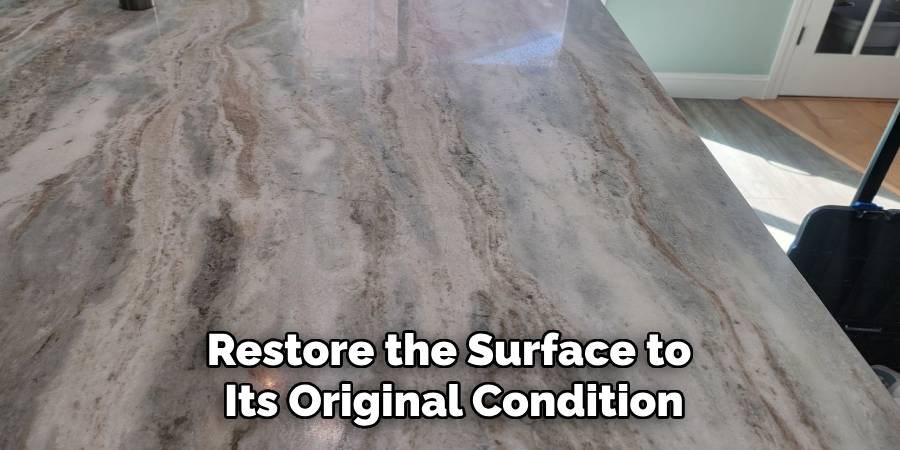
Granite surfaces are highly durable, but organic stains such as those caused by coffee, wine, or food can still pose a challenge. If you encounter such stains, two effective methods exist to restore the surface to its original condition.
Baking Soda and Hydrogen Peroxide Paste
Mix baking soda and hydrogen peroxide into a thick paste for a powerful stain-removal solution. Spread the paste generously over the stain and cover it with plastic wrap to prevent drying. Leave it overnight, allowing the paste to draw out the stain. The next day, wipe away the paste with a clean cloth and rinse the area thoroughly with water. This method is particularly effective for deep and stubborn stains.
Alternative Method: Dish Soap and Warm Water
For lighter or more recent stains, a simple solution of dish soap and warm water might suffice. Apply a few drops of dish soap to a damp cloth and use it to scrub the stained area in a circular motion gently. Be careful not to use abrasive materials that could damage the granite’s finish. Once the stain has been removed, rinse the surface thoroughly with warm water and dry it with a clean towel to prevent water marks.
By following these methods, your granite surface can remain spotless and pristine, maintaining its natural elegance and strength over time.
How to Remove Stains Granite Countertops: Removing Oil-Based Stains
Oil-based stains can be particularly tricky to remove from granite surfaces, but with the right methods, you can effectively restore your surface to its original condition. Below are two techniques tailored for addressing oil-based stains:
Baking Soda and Water Paste
Mix baking soda with water to form a thick, spreadable paste. Once prepared, apply the paste generously over the oil stain, ensuring full coverage. Cover the area with plastic wrap, securing the edges with tape if necessary to enhance its effectiveness and prevent it from drying too quickly. Allow the paste to sit for several hours or, ideally, overnight. This gives the baking soda enough time to absorb the oils from the granite surface. Afterward, gently wipe away the paste with a damp cloth and rinse the area thoroughly. If traces of the stain persist, repeat this process until the stain is completely removed.
Using Acetone for Stubborn Oil Stains
Acetone can provide an effective solution for more stubborn oil-based stains. Dab a small amount of acetone onto a soft, clean cloth and gently blot the stained area. Avoid scrubbing as it might spread the oil or damage the surface. After treating the stain, rinse the area thoroughly with warm water to ensure no acetone residue remains. Dry the surface with a clean towel to restore the granite’s polished appearance. With careful application, this method can help eliminate even deep-set oil stains.
Removing Water and Rust Stains
Water Stains and Hard Water Deposits
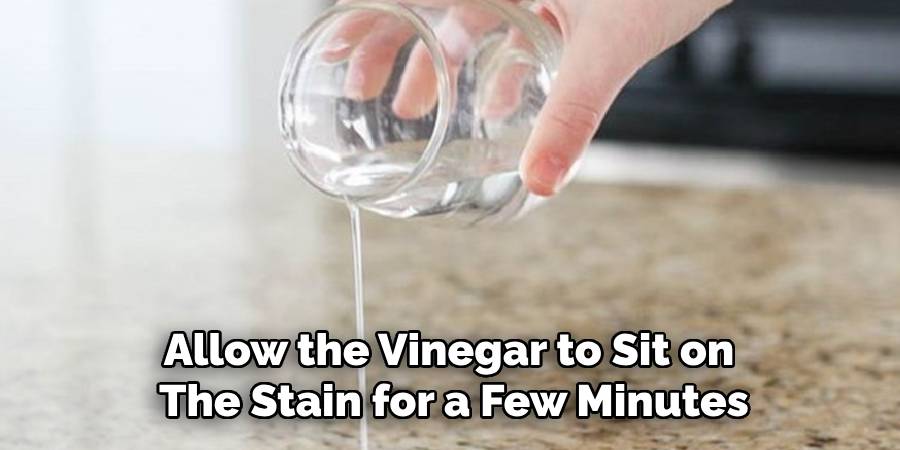
Water stains and hard water deposits can detract from the natural beauty of granite surfaces. Soak a soft cloth in vinegar and place it directly over the affected area to tackle these. Allow the vinegar to sit on the stain for a few minutes, loosening any mineral build-up. Then, gently scrub the area with a soft brush to remove the residue. Rinse thoroughly with warm water and dry the surface completely with a clean towel to prevent further water marks. This method restores the shine and maintains the granite’s pristine appearance.
Rust Stains
Rust stains can be more challenging to handle, but they can be effectively removed with the right approach. Use a commercial rust remover specifically designed for granite surfaces to avoid causing damage. Carefully follow the manufacturer’s instructions to ensure safe and effective application. After treating the rust stain, rinse the area thoroughly with water to remove any residue from the cleaner. Finish by drying the granite surface with a clean towel to restore its natural luster. By addressing rust stains promptly, you can maintain the integrity and elegance of your granite surfaces.
Removing Ink and Dye Stains
Ink and dye stains on granite surfaces can be unsightly, but they can be effectively removed with proper care. Using the right cleaning agents ensures that the beauty and durability of your granite remain intact.
Rubbing Alcohol for Ink Stains
For ink stains, particularly from pens or markers, rubbing alcohol can be highly effective. Begin by applying a small amount of rubbing alcohol to a cotton ball or soft cloth. Gently dab the stained area without rubbing too hard, which may further spread the ink. Once the ink stain begins to lift, use a damp cloth to wipe away any residue. Always dry the surface thoroughly with a clean towel to prevent water spots and ensure the granite retains its shine.
Hydrogen Peroxide for Food Coloring Stains
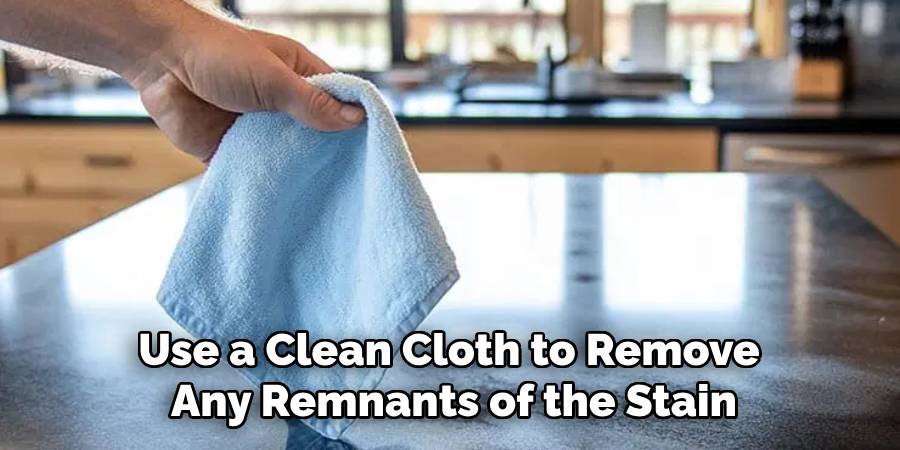
Food coloring stains can be addressed with hydrogen peroxide. Pour a small amount directly onto the affected area and allow it to sit for a few minutes. This helps to break down the stain for easier removal. Afterward, use a clean cloth to remove any remnants of the stain and the hydrogen peroxide. Rinse lightly with water if needed and dry the surface completely to maintain the granite’s pristine condition. When performed carefully, these methods help preserve the elegance and longevity of your granite surfaces.
Conclusion
Learning how to remove stains granite countertops is essential for preserving their beauty and durability. Methods such as using baking soda, hydrogen peroxide, and gentle cleaners effectively address various types of stains. Each technique emphasizes care and attention to avoid damaging the surface.
Additionally, sealing granite is crucial to prevent future stains and maintain its polished appearance over time. Finally, always address spills immediately to keep your granite countertops looking their best. With these tips, you can ensure your granite remains a timeless and elegant feature in your home.
Professional Focus
Angela Ervin, a former interior designer turned blogger, specializes in kitchen design and renovations. Through her website, she blends her passion for cooking with design expertise, sharing practical and creative ideas. Known for balancing functionality and beauty, Angela’s insightful content has made her a trusted voice in home design and lifestyle.
About the Author
Angela Ervin, an experienced interior designer and blogger, combines her passion for kitchen renovations with storytelling. Living in Petersburg with her family, she enjoys cooking and testing her projects firsthand. Known for her humor and relatable style, Angela shares creative, functional design insights through her content, making her a trusted voice in home design.
Education History
University: Virginia Commonwealth University
Degree: Bachelor of Fine Arts (BFA) in Interior Design
- Angela’s education at VCU focused on mastering core interior design principles, including spatial planning, color theory, materials selection, and sustainable design practices.
- She gained hands-on experience through studio projects and collaborative design exercises, which honed her ability to create functional and aesthetically pleasing environments.
- Her coursework also emphasized problem-solving and practical applications of design, preparing her for real-world projects like her self-directed kitchen renovations.
- The program’s strong foundation in both technical skills and creative expression shaped Angela’s ability to seamlessly integrate form and function in her work.
